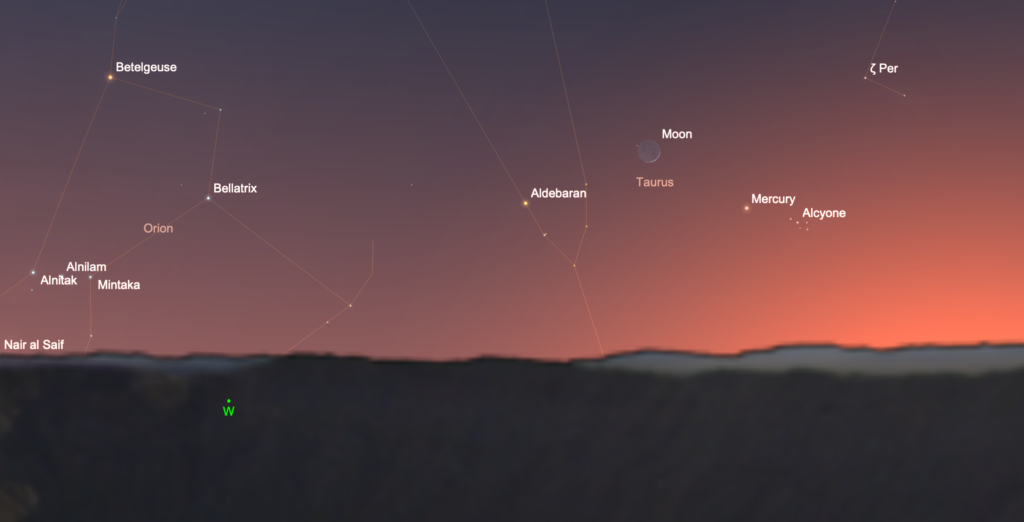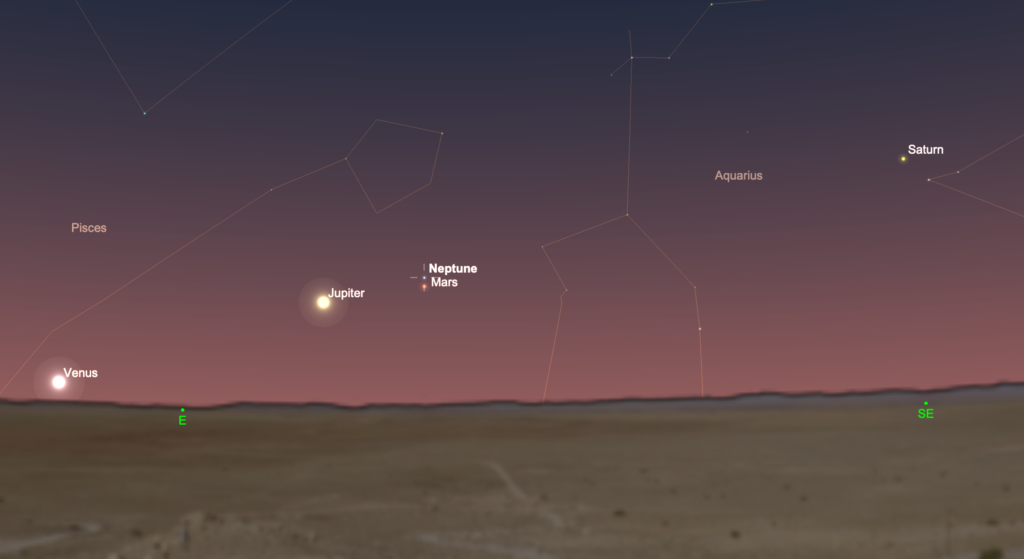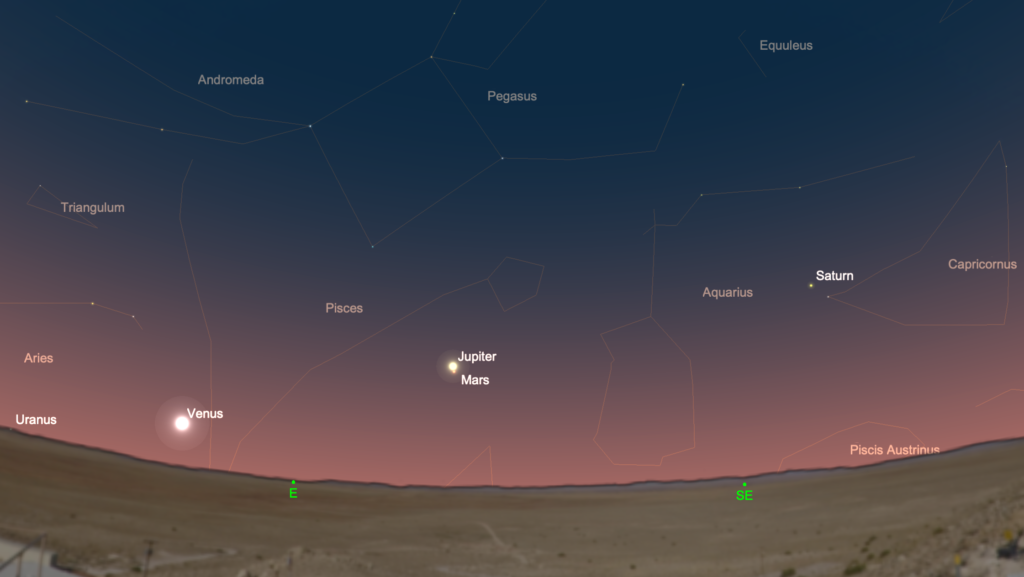
For deep-sky observers, May means galaxy season as our night sky looks out of the plane of the Milky Way into the intergalactic void. It’s the best time of year to grab some aperture and go deep. Also, the Eta Aquarid meteor shower peaks in the first week of the month, bright planets congregate in the eastern sky before sunrise, Jupiter and Mars make a close conjunction at the end of the month. Best of all, for much of the world, a total lunar eclipse occurs in mid-May during the ‘Full Flower Moon’. Here’s what to see in the night sky this month…
1-2 May. Look for Venus and Jupiter in the eastern sky before sunrise. The pair made a close conjunction on April 30, but they’re still less than half a degree apart. They continue to separate over the coming days.

2 May. As they move westward towards the horizon in the evening sky, the Hyades and Pleiades star cluster join a slender crescent Moon in the northwestern evening sky after sunset.
6 May. The usually reliable Eta Aquarid meteor shower peaks. The shower runs from April 21 through May 20 each year, with many meteors still visible for several days on either side of the peak. The Eta Aquarids occur as Earth passes through a stream of icy and dusty debris from Comet 1/P Halley, more commonly called Halley’s Comet. We pass through a second stream of the comet in late October during the Orionids meteor shower. Look for the meteors anywhere in the sky, preferably after midnight. They trace their paths back to a point near the star Eta Aquarii which rises in the eastern/southeastern sky before dawn. This is perhaps the best meteor shower of the year for southern hemisphere stargazers, but northern observers may see a few of these meteors too.
7 May. Dust off your binoculars and head outside to see a thick crescent Moon about three degrees north of the Beehive star cluster in the evening sky.
9 May. First Quarter Moon, 00:21 UT
16 May. Full Moon, 04:14 UT
15-16 May. A spectacular total lunar eclipse occurs as the moon nears perigee, its closest point to Earth in its orbit. That means it appears about 6% larger than average. This May ‘Flower Moon’ eclipse is visible from North and South America, western Europe and Africa, and just barely from New Zealand (but not Australia). The total phase of this lunar eclipse occurs from 3:28 UT to 4:54 UT, with peak eclipse occurring at 4:11 UT.

18 May. Look eastward again before sunrise to see Mars less than a degree below dim and distant Neptune. You will need optics, at least bigger binoculars and most likely a telescope to see both planets. Mars spans an apparent diameter of just 6.1” and shines at magnitude +0.8. Neptune spans 2.2” and shines about 700 times fainter at magnitude +7.9. Neptune’s faint blue-green color makes a striking contrast to brightening Mars’ red-orange glow. Much brighter Jupiter lies about six degrees to the west of the pair.
22 May. Last Quarter Moon, 18:43 UT
24 May. Look for Jupiter and Mars rising together in the eastern sky before sunrise with a waning crescent Moon nearby. The two grow closer each day on their way to conjunction next week.
27 May. The action continues in the eastern sky before sunrise as a thin crescent Moon, only 8% lit, lies about four degrees east of Venus over the eastern horizon before sunrise. The pair make lovely sight in binoculars. In contrast to the Moon’s thin crescent, in a telescope Venus shows a disk more than three-quarters illuminated. A beautiful sight to start your day (or to finish your night if you’ve been up with your telescope).

29 May. At the end of last month, it was Jupiter and Venus making a close conjunction in the early-morning sky. In May, the biggest planet makes a close approach to Mars in the southeastern sky before sunrise. The two planets lie about half a degree apart and are easily visible to the naked eye. At magnitude +0.7, red-orange Mars makes a striking color contrast with much brighter yellow-white Jupiter (magnitude -2.2). Both fit into the same field of view of a small telescope at low-to-moderate magnification. In a telescope, you can see the disks of each planet and Jupiter’s large Galilean moons and major cloud belts. Still distant, Mars gives up little detail. Both planets continue to grow larger and brighter over the coming months on their way to opposition on September 26 (Jupiter) and December 8 (Mars).
30 May. New Moon, 11:30UT